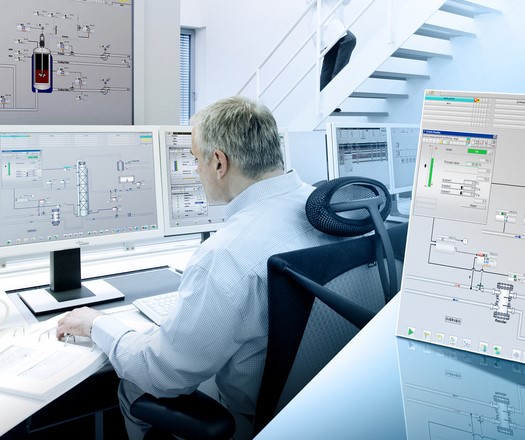From now on, production capacity assessment (hereafter referred to as "audit") and product sampling can be carried out remotely.
In May 2020, the working group of the Federal Service for Accreditation, the Ministry of Industry and Trade and the Ministry of Economic Development of the Russian Federation published a new extended version of recommendations on the conformity procedure for mass-produced goods and set up dematerialised procedures for audit and sampling of products that can be carried out remotely in video-conference format.
We remind you that the audit, one of the key elements of the conformity assessment procedure, is carried out by a Certification Body and aims to determine whether the manufacturer meets the necessary conditions to maintain a constant flow of good quality production in accordance with the requirements of the technical regulations of the Customs (Eurasian) Union.
The audit procedure is governed by GOST R 54293-2010 "Assessment of production capacities during conformity assessment" and by the Decision of the Council of the Eurasian Economic Commission No. 44 "Standard conformity assessment schemes" and is carried out on the manufacturing site with the aim of certifying mass-produced goods.
The audit is applicable to the EAC conformity certification scheme for mass-produced equipment, and in particular, for ATEX classified equipment (CU TR 012/2011), pressure equipment (CU TR 032/2011), electrical products (CU TR 004/2011 and CU TR 020/2011).
The audit of the manufacturing site implies a verification of the following elements:
- all production units (manufacturing premises, work areas, means of transport, etc.);
- technical documentation (project descriptions, design files, technological documents);
- the skills of the staff responsible for product quality;
- technical facilities, equipment and industrial tools;
- measuring instruments used for the analysis of product characteristics;
- initial quality control (of raw materials, materials);
- acceptance control and individual series tests (periodic tests);
- product labelling;
- storage conditions.
The remote audit procedure consists of the following steps:
- Planning of the remote audit;
- Communication with the auditor and the project manager of CCIS on the logistical and technical details;
- Preparation of the certification file by the company's representative in accordance with the list of documents defined in advance;
- Carrying out the audit in the form of a video recording;
- Obtaining of an audit report;
- Obtaining of test reports (tested on the production site or in a accredited laboratory in Russia).
How is the remote audit carried out when products are brought into conformity?
The audit is carried out in video-conference format, without having to go to the manufacturing site, by carrying out the analysis of the quality management system and the remote identification of natural persons, production premises, technical installations and the geographical location of work areas.
Generally speaking, the quality manager of the industrial site filmed by his colleague leads the virtual visit and answers the questions of the auditor with the help of a CCIS-Expertise specialist who also ensures translation and correct comprehension.
This video-documentary must be produced in such a way as to guarantee the presentation of the following steps:
- Identification of the manufacturing site:
o The manufacturer's representative and the manufacturing site must be identifiable (when filming the video, the surname, first name and position of a representative must be indicated, show the sign or name of the manufacturing site, record its location by, for example, taking a screenshot of your telephone with its GPS position, and specify the date and location of filming (the address of the manufacturing site) ;
o give a brief presentation of a manufacturing site, types of products, and a quality management system in place.
- Presentation of the main stages of the manufacturing process:
o the initial inspection site where components and raw materials are classified and stored;
o assembly and production lines in the site's workshops;
o production lines with storage of finished products, including industrial equipment;
o work areas for site personnel, assembly instructions;
o the final control site (the laboratory where finished products are tested);
o warehouses for storing finished products.
- Labelling procedure. Show the identification labels and product packaging;
- Complaints. Explain the standard procedure for dealing with customer complaints about non-compliant product quality.
- Management of the quality management system documents
At the end of the examination of the documentation and the verification of the manufacturing sites by the remote audit, an expert from the Certification Body elaborates an audit report where he indicates the results of the evaluation of the production capacities, references to the documents describing the internal procedures of the manufacturing site and draws conclusions on the manufacturer's ability to maintain a constant flow of good quality production in accordance with the requirements of the technical regulations.
This record is kept by the Certification Body in the archives of the technical files.
How is product sampling done during the compliance procedure given the restrictive measures taken by some countries in the context of the COVID-19 pandemic?
Following the examination of an application by a Certification Body, a sampling procedure is drawn up which indicates the types of tests to be carried out and the necessary quantity of samples, taking into account all the particularities of the products to be certified.
It is important to underline that each selected sample must represent a typical product for each of the registered models due to the identity of the product design and the manufacturer who uses the same technical regulations.
Once the sampling of the products, the analysis of the technical documentation, including the video of the audit, as well as the tests are completed and the test protocols issued by an accredited laboratory are obtained, the Certification Body will issue a certificate of conformity.
All photos and videos of the audit and product sampling stages must be recorded and kept in digital format in the technical file at the premises of the Certification Body. It is allowed to carry out the product sampling and remote auditing until 1 December 2020. These procedures are applicable to imported products as well as to products manufactured in Russia provided that the application has been submitted by the applicant.
















